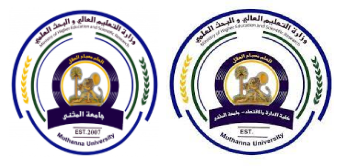The effect of environmental accounting as a transparency method the governance on financial results and improvement of the value of economic units
- Post by: Muthanna mjdes
- June 18, 2022
- Comments off
Authors: D.r. Amel Merzah Sakhil | D .r. Ali Razzaq Ali | Shaymaa Nihro Jabal
Authors Affiliation: Al-Furat Al-Awsat Technical University, Accounting Department
Article Type: Research Article
Abstract:
The goal of this analysis is to investigate and assess the impact of governance structures on the disclosure of environmental accounting on financial results and firm valuation. The research was carried out on companies listed on the Iraq Stock Exchange in the hospitality sub-sector for the duration of 2015–2019.
Sampling is achieved by purposeful sampling. Path analysis and moderated regression analysis are the analysis techniques utilized (MRA). The findings of the direct impact test analysis indicate that the structures of corporate governance that are proxies of global investment and systemic ownership do not influence financial efficiency and corporate valuation. The number of meetings of the audit committee has a considerable impact on financial results and firm value. Financial success has a significant influence on the valuation of firms. Financial results at firm valuation should not be mediated by financial results at firm valuation. Financial performance has been found to be moderated (weaken) by environmental accounting accounts as compared to the company’s valuation. The study also recommends that environmental accounting transparency will weaken financial results relative to firm valuation, which requires the company to improve disclosures in environmental accounting to moderate financial results toward firm valuation.
Keywords: Corporate governance processes, firm value, financial efficiency, and environmental accounting transparency
DOI: 10.52113/6/2022-12-1/185-199
vol. 12, no. 1, pp. 185-199.2022
